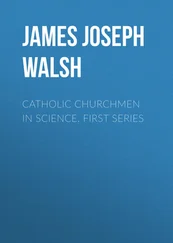And so? ‘Language flows so readily, that it is easy to assume it must be simple.’ But language only appears simple because it has to be so. There would, after all, be little point in humans acquiring this novel and powerful mode of inserting their thoughts directly into the minds of others if it took many years to get the hang of, and was difficult to use. But that apparent simplicity is, as already noted, a mark of language’s profundity, concealing the inscrutable complexities of brain function that make it appear to be so.
The major legacy of linguistics and neuroscience in the past few decades has been to reveal the complexities concealed behind that apparent simplicity while drawing attention at the same time to how the faculty of language requires major changes in every aspect of the functioning of the brain: a massive increase in its memory capacity so as to be able to store that vocabulary of forty thousand words, together with the provision for their near-instant recall; a profound deepening of the mind’s emotional repertoire with its feelings of sympathy and affection; the powers of reason; the moral distinction between right and wrong; and the imaginative intelligence with which poets and writers express themselves in unique ways.
The opportunity to reflect further on such matters will come later, but for the moment we must briefly return to contrast the conventional evolutionary portrayal of the origins of that ‘totally unprecedented entity’ Cromagnon man with how, in the light of the above, they now appear to be. To be sure, that steadily expanding brain over the preceding several million years, with its much enhanced neuronal firepower predisposed to those higher intellectual attributes, particularly language, and thus that cultural explosion of technical innovations and artistic expression. But that much-expanded brain by itself does not explain the phenomenon of language, nor why the evidence for its undoubted ‘benefit’ of being able to think, act and make sense of the world should have emerged so late and so suddenly. Why did the brain continue to expand in size for those millions of years when the ‘pay-off’ was so slight, and the attendant hazards of obstructed labour and dependent offspring so large? And this conundrum becomes yet more puzzling now we know that language is not just some bolt-on addition to the primate brain, but occupies large areas of it, and required the massive extension of those other attributes of mind, such as memory and intelligence, on which it depends.
Here neither of the two proposed evolutionary scenarios– that language evolved ‘early’ or ‘late’ – is convincing. The proponents of the ‘early’ scenario infer (quite rightly) that it must have taken millions of years for so complex a system to have evolved – all the way back to Turkana Boy’s people, Homo erectus, and beyond. Why then, one might ask, did he exhibit so little evidence of the ‘culture’ that language makes possible? The ‘late’ theorists claim language to be unique to Homo sapiens, the spark that lit the cultural explosion that separates him from his nearest relatives – but that would presuppose that it evolved over the mere 100,000 years since his emergence from Africa. This dispute cannot be resolved, but it serves the useful purpose of drawing attention to our profound ignorance: we no longer have the vaguest inkling of what caused the ‘switch to be thrown’ to inaugurate that first and most astonishing of all civilisations. Thirty-five thousand years on, we humans can draw on a vast treasure house of the cumulative knowledge and technology of the many civilisations that have had their moment in the sun, the Egyptians, Greeks, Romans, Arabs and so on. The genius of the Cromagnons, with their passion for art and wittily decorated spear-throwers, is that they had to work it all out for themselves.
This then is the riddle of the Ascent of Man: how and why twenty or more distinct species of hominid should, over a period of several million years, have undergone that wholescale anatomical transformation required for standing upright, and then followed it up with acquiring that prodigiously sized brain whose potential to comprehend the workings of the universe appears so disproportionate to the needs of the life of a hunter gatherer. It seems obvious that man’s sophistication and intelligence would have conferred some biological advantage, but all living things – birds, bats, dolphins and so on – have their own highly specialised sort of intelligence, different from our own, but which nonetheless maximises their chances of survival. The question, rather, as the biologist Robert Wesson puts it, is why the human brain should come with those striking mental powers, such as the capacity to compose symphonies or to solve abstruse mathematical theorems, that ‘are not of the kind likely to be rewarded by numbers of descendants’.
The further subsidiary and related riddleis why, for the best part of 150 years, the scientific orthodoxy has prevailed that we know the answer, at least in principle, to that riddle of the Ascent, when, as the palaeontologist Ian Tattersall acknowledges, ‘we have only the dimmest perception of how that dramatic history unfolded’. It has taken just a few pages to draw out the contradictions, at every turn, in the prevailing scientific certainty of ‘natural selection’ as the driving force of the Ascent of Man. There is, of course, no more self-evident truism than that nature ‘selects’ the strong and the fit at the expense of the weak and less than perfect. But that mechanism, by the same logic, can scarcely be invoked to account for standing upright and that massively enlarged brain which, by rights, should have so gravely compromised the survival prospects of those distant ancestors. There is nothing obscure in the observations outlined above: the anatomical implications of the upright stance and the obstetric hazards of that enlarging brain are well documented. Yet there is not the slightest hint in standard evolutionary texts or in the graphic museum displays of the Ascent that they might be problematic – while those who might think so are derisively dismissed, as we have seen, as ‘stupid, ignorant or insane’.
Most people get by well enough without the slightest inclination to speculate about their origins – and if they do, there is much consolation in that reassuring image first captured by Thomas Huxley of our onward and upward ascent. Still, it is surprising how that history of our origins becomes instantly so much more fascinating and intriguing the moment one reflects, for example, on the marvels of the composite integrity of the human skeleton, or the hidden complexities of grammar that can nonetheless be grasped by a two-year-old child. This discrepancy between the beguiling simplicities of the evolutionary theory and the profundity of the biological phenomena it seeks to explain is very striking. Its claims can never be ‘put to the test’ of experimental verification, as there is no way of telling one way or the other whether the process of natural selection really does account for those extraordinary biological events millions of years ago. The standard evolutionary explanation is, in short, irrefutable – or was irrefutable, until the uncompromising verdict of the genome projects, where the random genetic mutations that might set us apart from our primate cousins, mice, flies or worms are nowhere to be found.
It can, admittedly, be very difficult to see what all this might add up to, but clearly the ramifications of those seemingly ‘disappointing’ outcomes of the New Genetics and the Decade of the Brain run very deep indeed. We need to know why we have been seduced into supposing that science knows so much more than is clearly the case – and that means exploring further that seemingly unbridgeable gap between those two ‘Orders of Reality’ to seek out the forces that might conjure the beauty and complexity of the natural world from the monotony of those chemical genes, and the richness of human thought and imagination from the electrical activity of the brain.
Читать дальше












